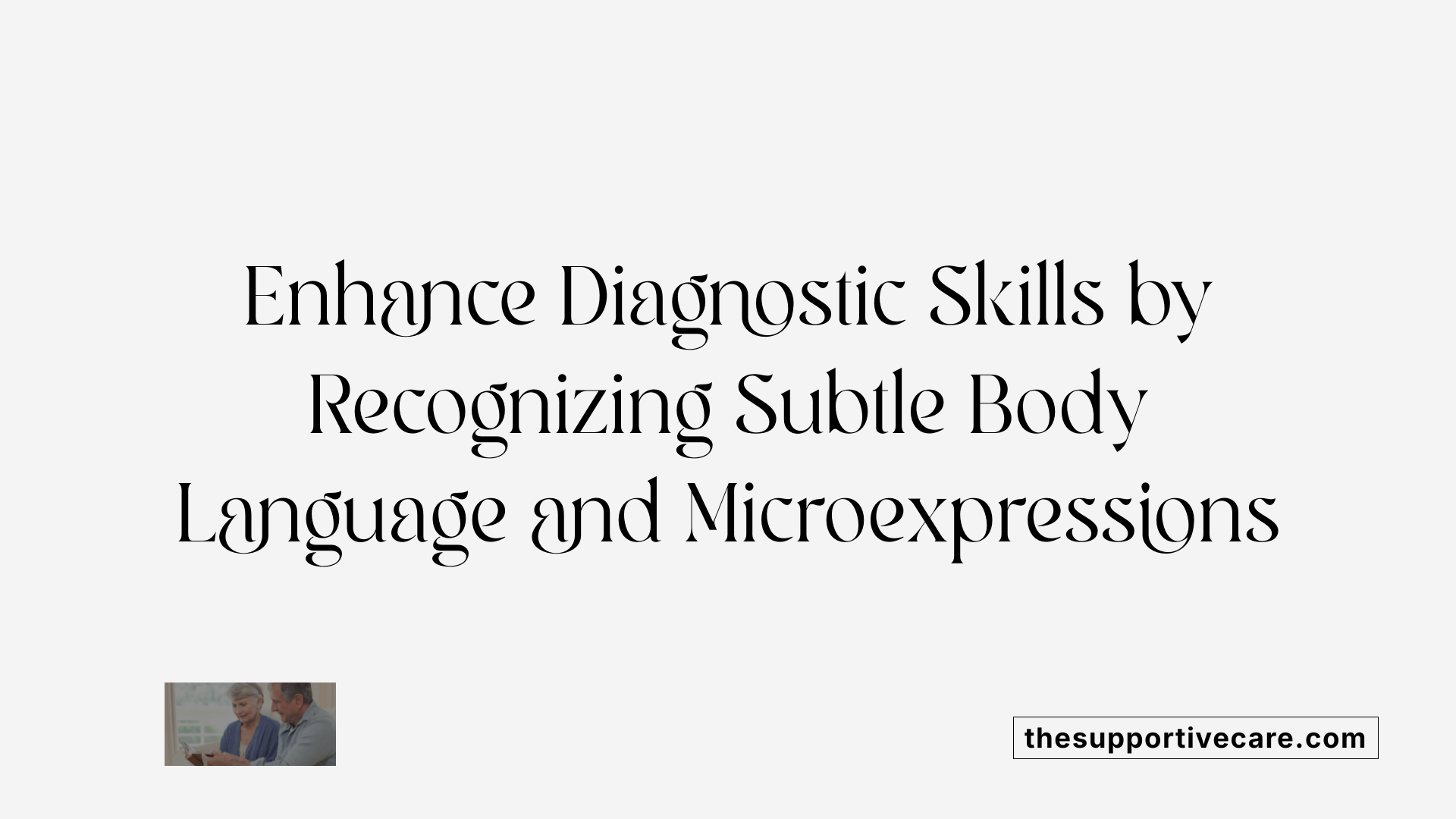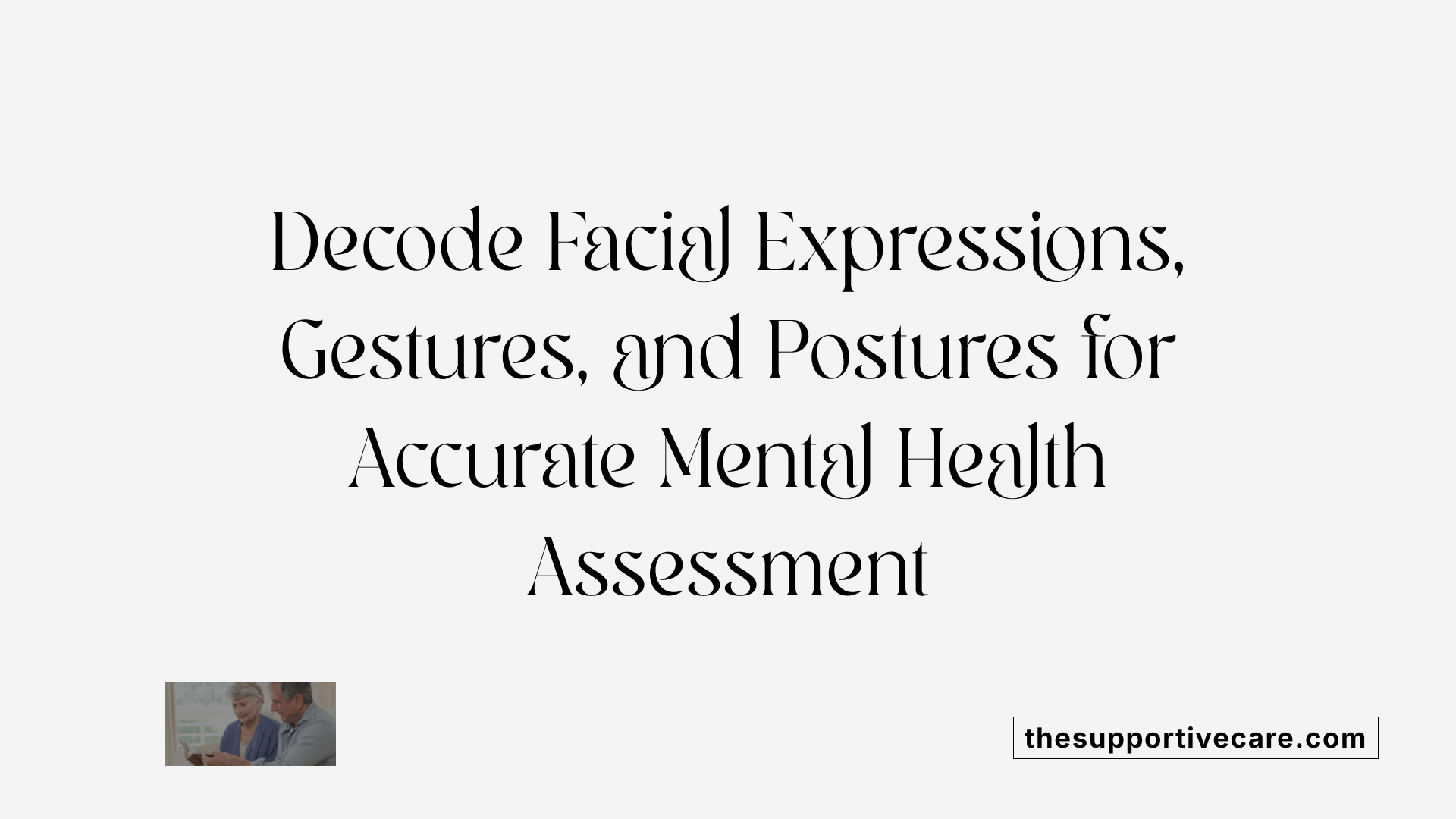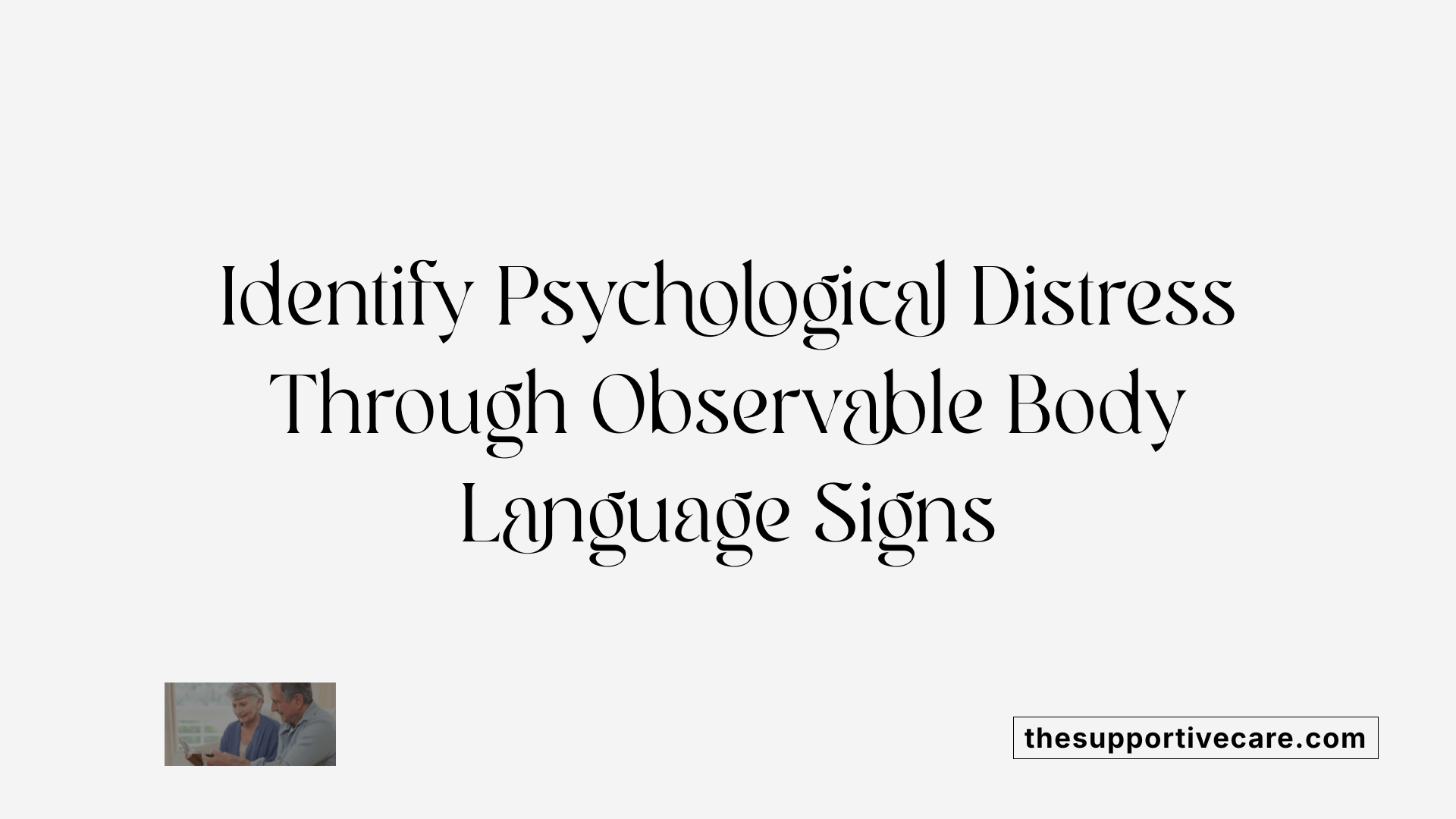Introduction to Non-Verbal Communication in Mental Health Assessment
Non-verbal communication encompasses a range of physical behaviors, expressions, and mannerisms that convey emotions and mental states without spoken words. Recognizing and interpreting these cues are vital in mental health screening and diagnosis, as they often reveal underlying feelings, distress, or deception that verbal communication might conceal. Effective assessment involves a keen understanding of body language, facial expressions, gestures, and vocal prosody, providing clinicians with an honest reflection of a patient’s internal emotional landscape. This article explores strategies for identifying these subtle yet powerful non-verbal signs to improve diagnostic accuracy and therapeutic outcomes.
The Role of Non-Verbal Cues in Mental Health Screening
What is the significance of non-verbal communication in mental health screening and diagnosis?
In mental health assessments, non-verbal communication is essential for gaining a comprehensive understanding of a patient's emotional and psychological state. It includes facial expressions, gestures, body language, eye contact, tone of voice, and microexpressions. These cues often occur unconsciously and can reveal feelings like distress, fatigue, or deception that verbal responses may not express clearly.
Research shows that non-verbal cues constitute approximately 60 to 65 percent of interpersonal communication. They are universal indicators of emotion, meaning they can be recognized across different cultures, making them highly valuable in diverse settings. For example, flat affect and poor eye contact are associated with schizophrenia, while reduced facial expressions and head movement can signal depression.
Clinicians who are trained to observe and interpret these signals can identify symptoms more accurately, often detecting subtle signs that patients might not verbally disclose. Recognizing incongruencies between what a person says and how they behave non-verbally helps in diagnosing conditions such as anxiety, depression, or personality disorders.
Moreover, non-verbal communication influences the development of trust and rapport in therapy, facilitating a more open and honest therapeutic environment. Overall, integrating non-verbal cues into assessments boosts diagnostic precision, enhances understanding, and supports effective treatment planning.
Training and Techniques for Recognizing Non-Verbal Indicators

What are effective techniques for recognizing non-verbal indicators of mental health issues?
Recognizing non-verbal cues is crucial for understanding a person's emotional and mental state. Effective techniques involve carefully observing body language, facial expressions, gestures, eye contact, and posture. Clinicians should look for inconsistencies between verbal and non-verbal communication, as these contradictions can reveal underlying issues.
Attention to the context, environment, and cultural norms is essential. For example, what may seem like disinterest could be cultural reticence. Therefore, examining multiple behaviors simultaneously provides a fuller picture. For instance, flattened affect combined with minimal eye contact and decreased head movement often signals depression.
Tools like the Facial Action Coding System (FACS) offer objective ways to analyze facial movements. FACS breaks down facial expressions into specific muscle movements, helping clinicians reliably identify emotions like genuine happiness (Duchenne smile) versus fake smiles.
Recognizing microexpressions—brief, involuntary facial expressions—can reveal true emotions that individuals may try to conceal. These fleeting displays last only fractions of a second but are highly indicative of internal states such as anger, fear, or sadness.
Baseline behaviors vary among individuals, but deviations—such as sudden agitation, silence, or increased fidgeting—may point to mental health concerns like anxiety or psychosis. Familiarity with specific non-verbal signs related to particular conditions enhances diagnostic accuracy.
Lastly, developing self-awareness about one's own non-verbal cues—like facial expressions and posture—can improve interpersonal interactions. Mindfully observing and interpreting these subtle signals supports early detection of mental health issues and fosters empathetic responses.
Assessing Specific Non-Verbal Signs and Their Interpretations

How can clinicians interpret non-verbal signs such as head movements, gestures, and facial expressions?
Clinicians assess non-verbal cues by observing their frequency, duration, and the specific context in which they occur. For instance, rapid or excessive head movements might indicate agitation or uncertainty, while slow or minimal movements can reflect sadness or fatigue.
Facial expressions are significant indicators of emotional states. A genuine smile typically involves both the mouth and eyes, signaling happiness, while a forced or fake smile may lack eye muscle engagement. Expressions like furrowed brows or clenched jaws can suggest anger or frustration, whereas downward gaze and minimal facial movement often denote sadness or depression.
Gestures and body language also provide clues. Crossed arms might indicate defensiveness or discomfort, while open gestures or leaning forward suggest engagement and openness. Eye contact is another vital cue: avoidance may signal anxiety, guilt, or disinterest, while sustained eye contact can indicate confidence or interest. Conversely, avoiding eye contact can also be a sign of dishonesty or internal distress.
Interpreting these cues involves examining their alignment or contradiction with what the patient verbally communicates. For example, a patient might verbally express reassurance but exhibit signs of agitation through tense posture or fidgeting, revealing underlying concerns.
Additionally, clinicians should be aware of their own non-verbal behaviors—such as maintaining appropriate eye contact and adopting an open posture—to foster trust and demonstrate active engagement.
In the age of technology, frequent use of computers or mobile devices during sessions can hinder accurate observation of non-verbal cues. It's important for clinicians to minimize such distractions to better read subtle signals.
Cultural factors play a role, too. Certain gestures, facial expressions, or personal space preferences vary across cultures, affecting interpretation. Increased awareness and training in cultural competence are essential.
Overall, integrating careful observation with contextual understanding and cultural sensitivity enhances the accuracy of interpreting non-verbal signs, leading to more effective communication, better rapport, and precise assessments of mental health states.
Signs of Psychological Distress Revealed through Body Language

What are some common body language signs associated with psychological distress?
Body language offers important clues about a person's emotional state, especially when they may find it difficult to verbalize their feelings. Common signs of psychological distress include fidgeting, avoiding eye contact, and adopting tense or inward postures.
Fidgeting, such as tapping fingers, bouncing knees, or playing with objects, often indicates anxiety or agitation. Avoidance of eye contact can suggest feelings of shame, guilt, or fear. When individuals slouch or curl into themselves—such as the fetal position—or display stiff, interlaced fingers (sometimes called 'teepee hands'), these are signs of discomfort or withdrawal.
Repetitive movements like rocking or scratching are common stress-coping behaviors. Facial expressions may show sadness, worry, or irritability, sometimes masked behind a forced or strained smile. Physical signs include rapid breathing, sweating, and restless movements.
Other cues involve behaviors like lip sucking, excessive grooming, or distancing themselves during social interactions. These physical and behavioral markers provide vital information for mental health assessment, highlighting underlying distress even when words are insufficient or unavailable.
Identifying Non-Verbal Indicators of Specific Conditions
Are there specific non-verbal signs indicative of conditions like depression or suicidal ideation?
Yes, certain non-verbal cues can be instrumental in recognizing signs of depression or suicidal ideation. These cues often manifest as social withdrawal, with individuals avoiding eye contact, displaying minimal facial expressions, or showing a flat affect.
Reduced facial expressiveness, such as fewer smiles or positive gestures, is common. Movements tend to slow down, and head movements may diminish, reflecting emotional numbness or fatigue.
Physical signs are also evident. Such individuals might withdraw from touch, neglect personal hygiene, or cover or remove mirrors and photographs. Self-injurious behaviors, like scratching, touching the neck or wrists, can be visible signs of internal distress.
Behavioral changes through observation include slowed movements, changes in sleep and eating patterns, loss of interest in hobbies, or giving away possessions, all of which can be detected non-verbally.
These signs may often precede or accompany verbal expressions of hopelessness or thoughts of self-harm, making non-verbal cues a vital component in assessment.
Early recognition of these signs can facilitate timely intervention, especially when individuals are unable or unwilling to verbalize their struggles. By paying close attention to subtle shifts in expression, movement, and physical appearance, clinicians and loved ones can identify at-risk individuals and act accordingly.
Cultural and Theoretical Foundations of Non-Verbal Communication
What is the significance of non-verbal communication in mental health screening and diagnosis?
Non-verbal communication is vital in mental health assessment because it offers profound insights into a person’s emotional and psychological state that may not be verbally expressed. Clinicians observe facial expressions, gestures, posture, vocal tone, and microexpressions to detect emotions like distress, anxiety, or deception.
Research shows that many non-verbal cues are universal, meaning they appear similarly across different cultures, although cultural variations exist. When verbal and non-verbal messages conflict, non-verbal cues often reveal true feelings. For example, a forced smile might mask sadness or discomfort.
Trained mental health professionals leverage skills like active observation and interpretation of non-verbal signals to identify symptoms of depression, anxiety, or other disorders quickly, even during brief interactions. This approach enhances diagnostic accuracy and supports building rapport, leading to more effective treatment.
Therefore, understanding and accurately reading non-verbal cues significantly improve the quality of mental health diagnosis and care, making these skills essential for clinicians and caregivers.
How do cultural and evolutionary perspectives contribute to understanding non-verbal cues?
From a cultural and evolutionary standpoint, non-verbal communication is deeply rooted in biology and shared across humanity. Charles Darwin proposed that bodily movements representing internal emotional states are universal, serving an evolutionary purpose to signal feelings and intentions.
Supporting Darwin's theory, Ekman and Friesen’s research confirmed that facial expressions of emotions such as happiness, sadness, anger, disgust, fear, and surprise are consistent across a wide variety of cultures. Their studies, including isolated tribal groups, demonstrated that these expressions are innate and not solely learned behaviors.
This universality suggests that many non-verbal cues are biologically hardwired, allowing cross-cultural understanding of emotions. Recognizing this helps clinicians interpret signs accurately across diverse populations, fostering better communication and diagnosis.
By appreciating the evolutionary roots and cultural influences on non-verbal signals, mental health professionals can enhance their sensitivity and effectiveness in assessing human emotions beyond linguistic barriers.
| Aspect | Explanation | Cultural Influence | Evolutionary Perspective |
|---|---|---|---|
| Facial expressions | Universal indicators of emotion, such as happiness or fear | Vary slightly in display rules, but core expressions are consistent | Innate, shared across species and cultures |
| Gestures | Culturally specific signs; also innate gestures like waving | Specific gestures vary, but some like thumbs-up are common | Basic gestures have evolutionary origins for communication |
| Non-verbal cues | Posture, eye contact, tone, microexpressions | Cultural norms influence appropriateness | Innate signals evolved for survival and social bonding |
Understanding these perspectives enhances clinicians’ ability to interpret non-verbal cues accurately, regardless of cultural background, and underscores that many such cues are rooted in biology and shared human experience.
The Impact of Non-Verbal Communication on Therapeutic Outcomes
How do non-verbal behaviors of psychiatrists influence therapeutic rapport and psychotherapy effectiveness?
Non-verbal cues from psychiatrists play a crucial role in shaping the therapeutic relationship. Behaviors such as maintaining attentive eye contact, mirroring patients’ gestures, and displaying open body language help foster trust and create a welcoming environment. These actions demonstrate empathy, acceptance, and genuine interest, encouraging patients to share their feelings more openly.
On the other hand, negative non-verbal signals—such as distracted movements, avoiding eye contact, or crossing arms—can create a sense of detachment or mistrust. Such cues might unintentionally communicate disinterest or impatience, which hampers rapport and can diminish the therapy's effectiveness.
Training programs, like those by Pollack Peacebuilding Systems, emphasize understanding one's own non-verbal behaviors and observing patients’ cues. Therapists who master these skills can adjust their non-verbal communication in real-time, thereby strengthening the therapeutic alliance. This active awareness helps clinicians interpret emotional states more accurately, tailor interventions effectively, and improve overall clinical outcomes.
Furthermore, the emotional validation expressed through non-verbal signals contributes to a sense of safety and support for patients. As a result, high-quality non-verbal communication enhances patient engagement, facilitates emotional expression, and ultimately promotes recovery.
Supporting Individuals with Communication Challenges
How do non-verbal cues assist in understanding individuals with communication difficulties?
Non-verbal cues are vital for interpreting the feelings and needs of those who may not communicate verbally. They include facial expressions, body language, gestures, eye contact, and other physical behaviors that convey emotional states or intentions. For individuals with Profound Intellectual Disabilities (PID) or neurological conditions who struggle with spoken language, these cues often become the primary means of communication.
What are some challenges faced by individuals with Profound Intellectual Disabilities (PID) in interpreting non-verbal cues, and how can support strategies be implemented?
People with PID encounter substantial difficulty in both understanding and expressing non-verbal signs. This can hinder social interactions, emotional comprehension, and self-expression. They might miss teachable cues or misinterpret others' gestures, leading to frustration and social isolation. Moreover, their struggles with empathy and self-advocacy can increase dependence on caregivers.
To support these individuals, professionals and caregivers employ various strategies. Using Augmentative and Alternative Communication (AAC) systems such as sign language, picture exchange communication systems (PECS), visual schedules, and digital aids can facilitate understanding and expression. Consistent routines and familiar environments help create predictability, reducing anxiety and increasing trust.
A critical component is modeling appropriate non-verbal behaviors, so individuals learn through observation. Patience and repetition are essential as progress may be gradual. Caregivers should observe and interpret subtle cues, responding with calm reassurance. Providing opportunities for success boosts confidence and social engagement.
How can AAC and visual aids improve communication?
AAC tools are invaluable in bridging communication gaps, especially when speech is limited or absent. Sign language, picture boards, and digital communication devices allow individuals to express their needs and feelings effectively.
Visual aids like schedules, charts, and symbols help structure daily activities, easing confusion and supporting routine understanding. These tools empower individuals to participate more fully in social and daily situations, enhancing their emotional well-being and independence.
Strategies for supporting non-verbal populations
Supporting non-verbal individuals involves several key approaches:
- Creating a consistent environment with familiar routines.
- Employing multiple communication modalities, including AAC, gestures, and facial expressions.
- Modeling appropriate non-verbal behaviors.
- Paying close attention to subtle cues like eye contact, posture, and touch.
- Maintaining patience and offering ample time for responses.
- Building trusting relationships through attentive and respectful interactions.
Importance of tailored support
Every individual’s needs are unique. Effective support involves assessing their specific challenges and preferences. Collaboration among healthcare professionals, caregivers, and family members ensures a comprehensive approach. This holistic support enhances social participation, emotional health, and overall quality of life.
| Support Strategies | Examples | Goals |
|---|---|---|
| AAC Systems | Sign language, PECS, digital aids | Facilitate expression and understanding |
| Visual Schedules | Picture charts, symbols | Structure routines and reduce anxiety |
| Modeling Behaviors | Demonstrating gestures | Teach appropriate social cues |
| Consistent Environment | Familiar routines | Increase predictability and comfort |
| Patience and Observation | Responding calmly | Foster trust and accurate interpretation |
Understanding and supporting non-verbal communication is crucial for enriching the lives of individuals with communication challenges. Through tailored strategies and innovative tools, caregivers can help break down barriers, promote inclusion, and enhance emotional connection.
Embracing Non-Verbal Communication for Better Mental Health Outcomes
Mastering the recognition and interpretation of non-verbal cues is indispensable for mental health professionals. These subtle signals offer profound insights into patients' emotional states, often before spoken words reveal distress or risk. By honing observational skills, utilizing technological tools, and understanding cultural and evolutionary principles, clinicians can improve the accuracy of assessments and foster more effective therapeutic relationships. Moreover, awareness of non-verbal behaviors not only benefits diagnosis but also supports early intervention, reduces stigma, and enhances patient-centered care. Cultivating mindfulness of non-verbal communication closes the gap between verbal reports and authentic emotional experiences, ultimately promoting mental health and well-being across diverse populations.
References
- 3 Mental Health De-Escalation Techniques (Verbal & Nonverbal)
- Nonverbal Communication in Psychotherapy - PMC - PubMed Central
- Body Language and Nonverbal Communication - HelpGuide.org
- Nonverbal Social Withdrawal in Depression: Evidence from manual ...
- The Utility of Assessing Nonverbal Communication in the Psychiatric ...
- Mental Health Indicators in Body Language: A Guide to Recognize
- How to Read Nonverbal Communication Cues: 5 Techniques
- Identifying Psychological Symptoms Based on Facial Movements
- 9 Types of Nonverbal Communication - Verywell Mind



































































































